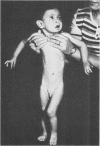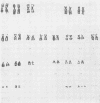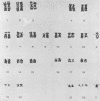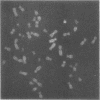Abstract
Two unrelated children, not affected with Down's syndrome, with strikingly similar phenotypes and an extra G-like chromosome are presented. Quinacrine and trypsin-Giemsa banding identified the extra chromosome as No. 22. The phenotype of these patients and the review of 15 additional similar cases from the literature permit a definition of the cardinal features of trisomy 22; mental and growth retardation, microcephaly and craniofacial asymmetry, strabismus, beaked and prominent nose, long philtrum, cleft palate, micrognathia, large low set ears with preauricular tags and/or pits, long slender fingers, congenital heart disease, inguinal hernia, and hip dislocation.
Full text
PDF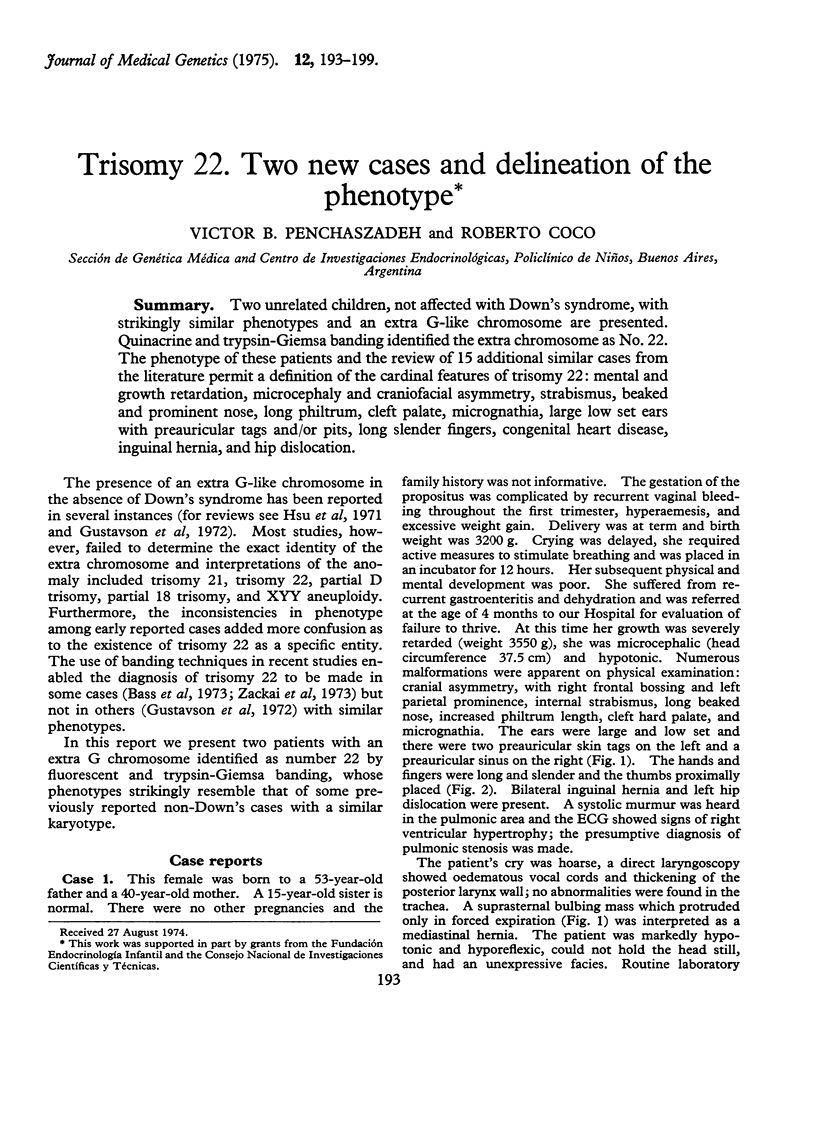
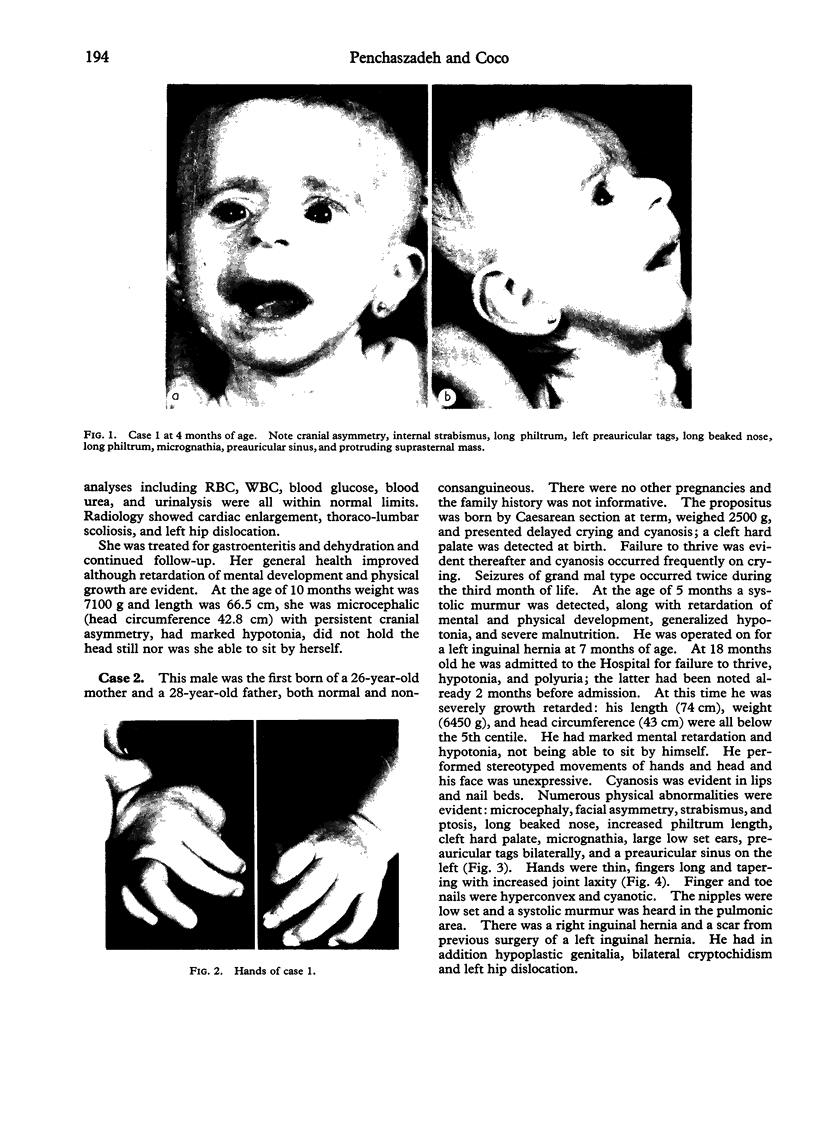
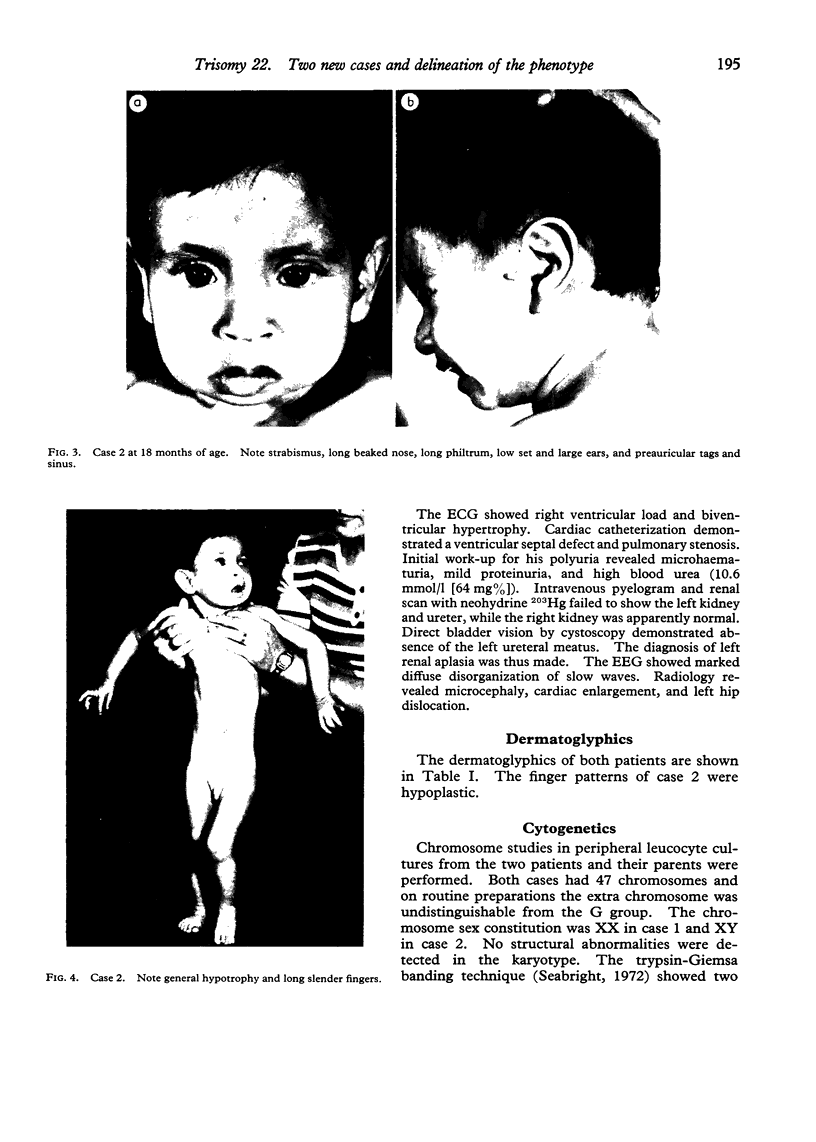
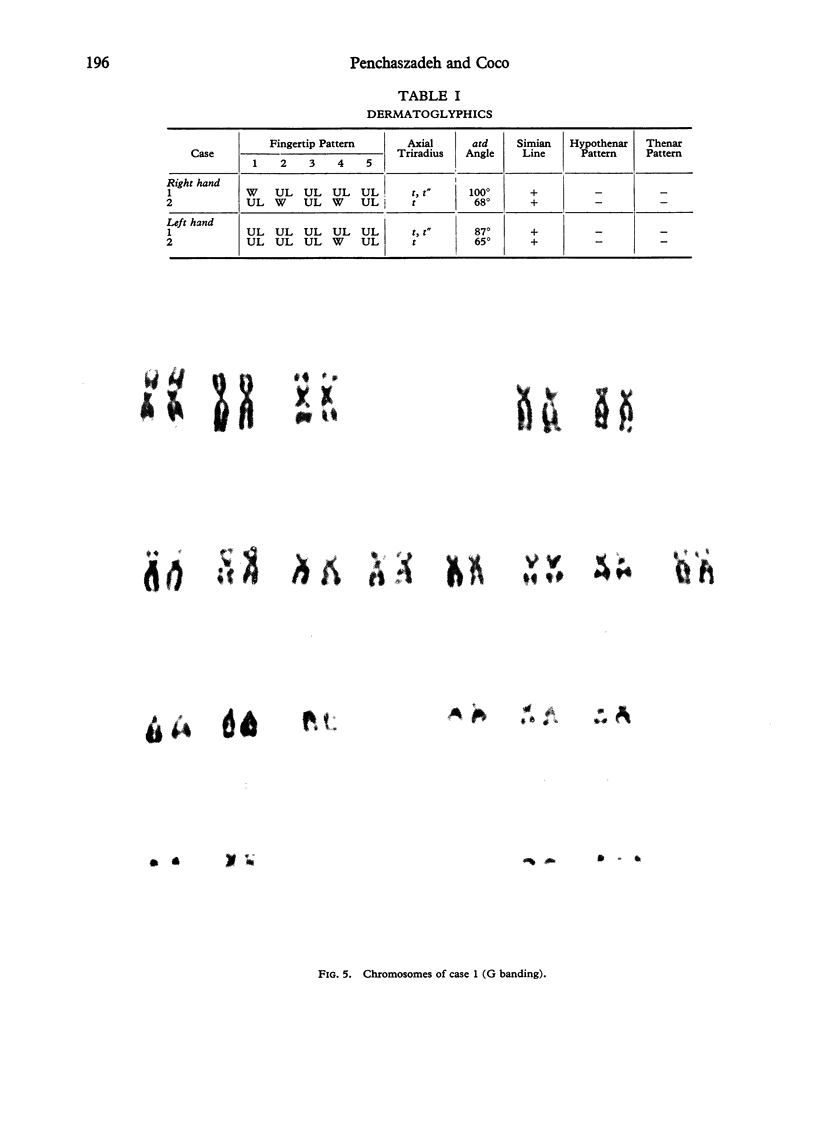
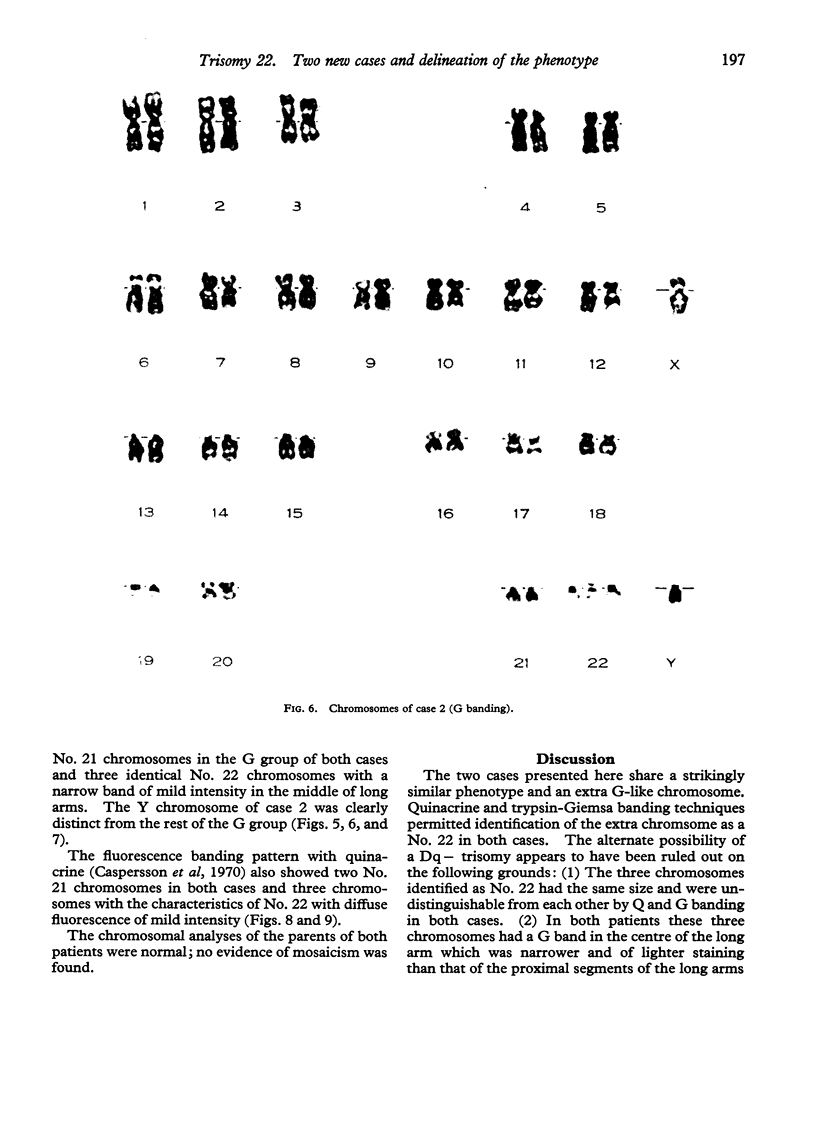
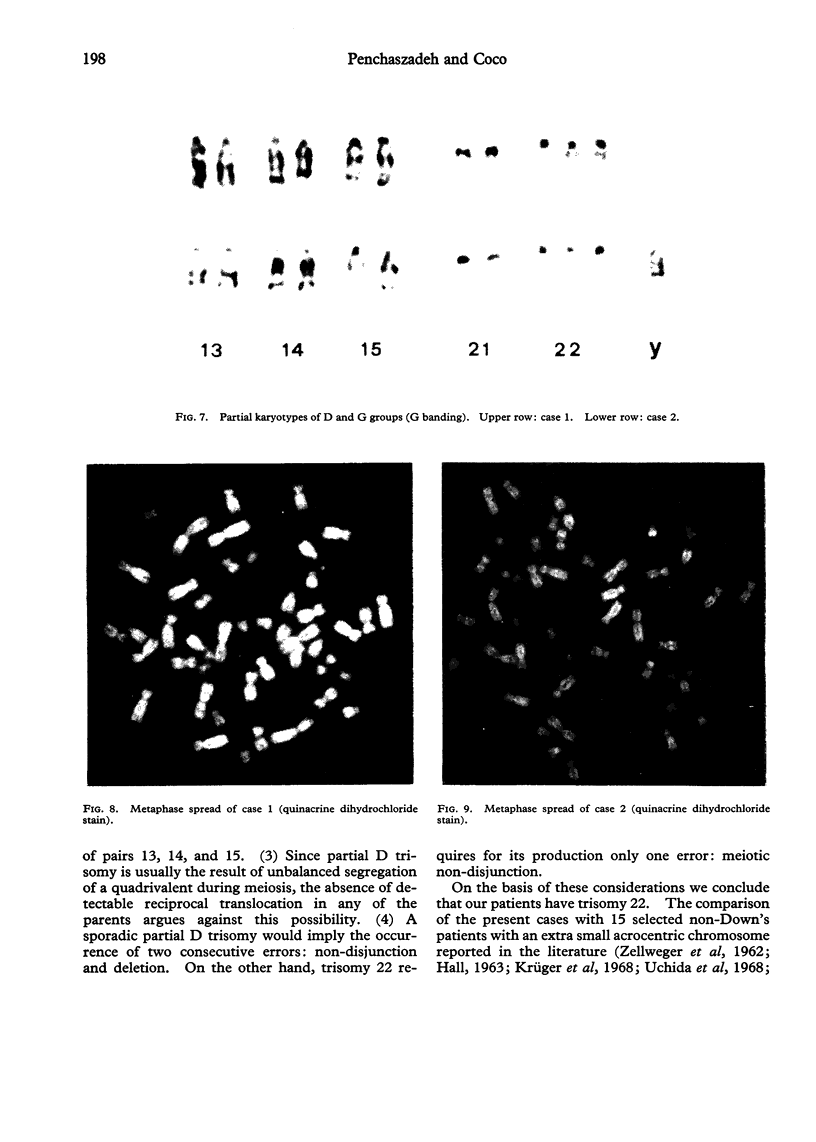
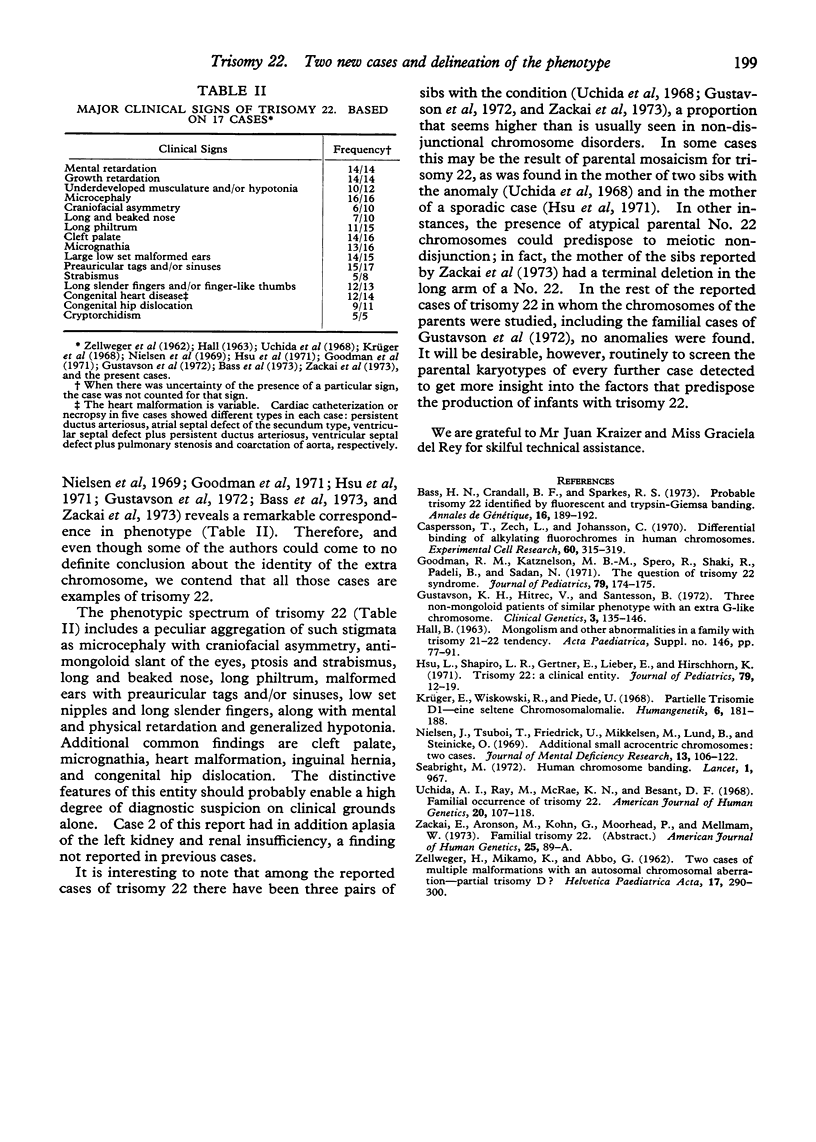
Images in this article
Selected References
These references are in PubMed. This may not be the complete list of references from this article.
- Bass H. N., Crandall B. F., Sparkes R. S. Probable trisomy 22 identified by fluorescent and trypsin-giemsa banding. Ann Genet. 1973 Sep;16(3):189–192. [PubMed] [Google Scholar]
- Caspersson T., Zech L., Johansson C. Differential binding of alkylating fluorochromes in human chromosomes. Exp Cell Res. 1970 Jun;60(3):315–319. doi: 10.1016/0014-4827(70)90523-9. [DOI] [PubMed] [Google Scholar]
- Goodman R. M., Katznelson M. B., Spero M., Shaki R., Padeh B., Sadan N. The question of trisomy 22 syndrome. J Pediatr. 1971 Jul;79(1):174–175. doi: 10.1016/s0022-3476(71)80096-3. [DOI] [PubMed] [Google Scholar]
- Gustavson K. H., Hitrec V., Santesson B. Three non-mongoloid patients of similar phenotype with an extra G-like chromosome. Clin Genet. 1972;3(2):135–146. doi: 10.1111/j.1399-0004.1972.tb01735.x. [DOI] [PubMed] [Google Scholar]
- Hsu L. Y., Shapiro L. R., Gertner M., Lieber E., Hirschhorn K. Trisomy 22: a clinical entity. J Pediatr. 1971 Jul;79(1):12–19. doi: 10.1016/s0022-3476(71)80052-5. [DOI] [PubMed] [Google Scholar]
- Krüger E., Witkowski R., Piede U. Partielle Trisomie D1--eine seltene Chromosomenanomalie. Humangenetik. 1968;6(2):181–188. doi: 10.1007/BF00297727. [DOI] [PubMed] [Google Scholar]
- Nielsen J., Tsuboi T., Friedrich U., Mikkelsen M., Lund B., Steinicke O. Additional small acrocentric chromosome: two cases. J Ment Defic Res. 1969 Jun;13(2):106–122. doi: 10.1111/j.1365-2788.1969.tb01071.x. [DOI] [PubMed] [Google Scholar]
- Seabright M. Human chromosome banding. Lancet. 1972 Apr 29;1(7757):967–967. doi: 10.1016/s0140-6736(72)91541-3. [DOI] [PubMed] [Google Scholar]
- Uchida I. A., Ray M., McRae K. N., Besant D. F. Familial occurrence of trisomy 22. Am J Hum Genet. 1968 Mar;20(2):107–118. [PMC free article] [PubMed] [Google Scholar]
- ZELLWEGER H., MIKAMO K., ABBO G. Two cases of multiple malformations with an autosomal chromosomal aberration- partial trisomy D? Helv Paediatr Acta. 1962;17:290–300. [PubMed] [Google Scholar]






